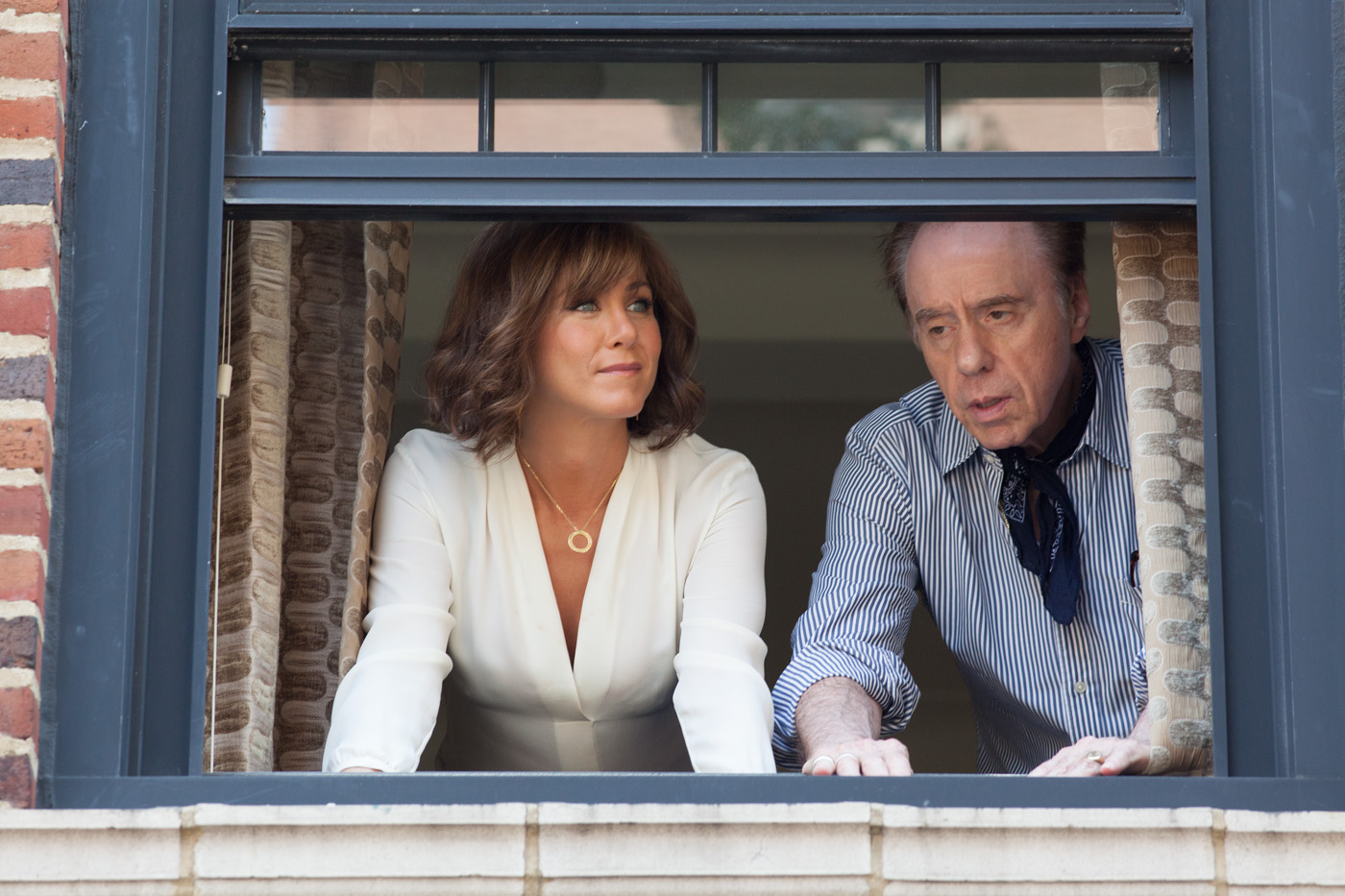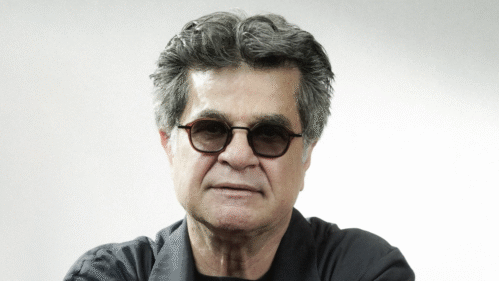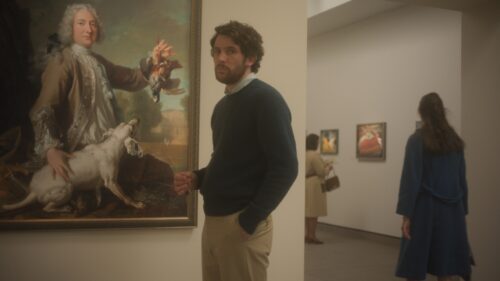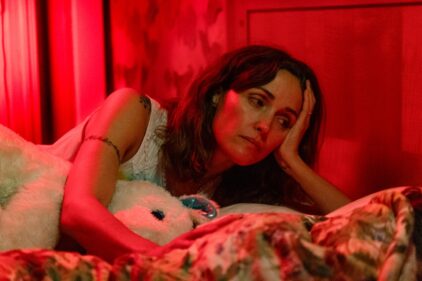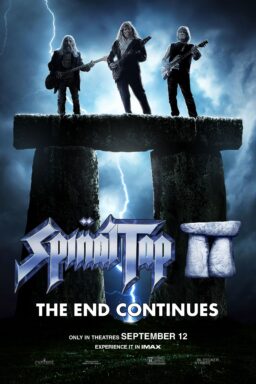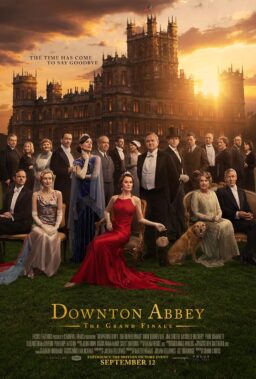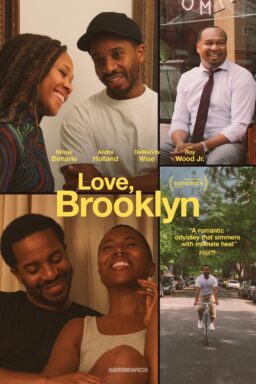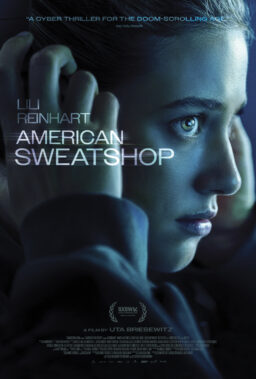Is it possible to overstate the influence and impact that Peter
Bogdanovich has had on American film history? Leaving aside his own pictures
for a moment—which means leaving aside some of the greatest movies of the 1970s
(“The Last Picture Show,” “Paper Moon”), ’80s (“They All Laughed,” “Mask”), and
’90s (the criminally underrated “Texasville” and “The Thing Called Love”)—no
one has recorded a greater number of significant interviews with the directors
and actors responsible for the most creatively fertile period the Hollywood
cinema has ever known. In a series of monographs and magazine profiles in the
1950s and 1960s (many of which were collected and expanded upon in a pair of
essential volumes, “Who the Devil Made It” and “Who the Hell’s In It”),
Bogdanovich conducted in-depth interviews with John Ford, Alfred Hitchcock,
Howard Hawks, Jerry Lewis, and dozens of other legends—and many others who became legends because of the light
Bogdanovich shined on their art. Bogdanovich’s appreciations of and
conversations with the likes of Robert Aldrich, Fritz Lang, and Don Siegel are
not only vital film scholarship but have inspired some of the best modern filmmakers—Quentin
Tarantino, for example, has been quite vocal about the impact that “Who the
Devil Made It” had on “Jackie Brown.”
Then, of course, there are Bogdanovich’s own films, many of
which were informed by his encounters with his heroes: hilarious and elegantly
structured farces like “What’s Up, Doc?” and “Noises Off”; sumptuous, sometimes
achingly nostalgic period pieces (“Daisy Miller” and “Nickelodeon”); and
complex, bittersweet dramedies that defy categorization (“Saint Jack,” “They
All Laughed”). Some of these films were revered as masterpieces almost the
second they were released, while others have needed time (and, in the case of
“At Long Last Love,” “Nickelodeon,” and “Mask,” some reworking on home video to
bring them closer to the director’s original intentions) for their
satisfactions to become more widely appreciated. Taken together they comprise a
body of work both as varied and as singular as those of the old Hollywood
masters Bogdanovich reveres.
The director’s latest picture, “She’s Funny That Way,” is a
screwball comedy that pays tribute to the bedroom farces of Ernst Lubitsch,
whose “Cluny Brown” is explicitly referenced in the film. It follows a theater director (Owen Wilson) whose affection for prostitutes—and whose habit of giving them
money so that they can get out of the life after they’ve been with him—leads to
complications after one of the girls (a brilliantly funny Imogen Poots) shows
up to audition for his latest play. The film, which also stars Kathryn Hahn,
Will Forte and Jennifer Aniston, recalls “Noises Off” in its Broadway setting
and escalating hilarity, but also serves as a lighter treatment of the romantic
struggles explored in “They All Laughed.” I spoke with Bogdanovich in Beverly
Hills as he prepared for the release of “She’s Funny That Way,” an acting role
in another director’s film, and “Wait For Me,” a new directing project for
producer Brett Ratner. Over fifty years after he started writing about and for
the movies, Bogdanovich is suddenly busier than ever.
I want to begin by
asking a little about your writing process. You’re such a film historian and
enthusiast, and that leads me to wonder where you start—do you think of a
certain genre or tradition you want to work in and then tailor a story to that,
or do you begin with themes you want to explore and then figure out what style
best fits the ideas you’re trying to examine, or…
Well, in the case of “She’s Funny That Way,” Louise
[Stratten, Bogdanovich’s ex-wife and co-screenwriter] and I were in New York…this
was around 1999 or 2000. I had just gone bankrupt for the second time because I
had tried to buy back “They All Laughed” and distribute it myself, and we were
having a difficult time—not personally,
but financially—and we thought we’d cheer ourselves up by writing a
comedy. We started with the title “Squirrels to the Nuts,” which got changed
because too many people thought it was a kids’ picture and you couldn’t
translate it or whatever, but it’s in Ernst Lubitsch’s “Cluny Brown” as a way
of saying that the unusual way of doing something is good. Anyway, the starting
point was an incident that happened to me in Singapore on “Saint Jack,” which
as you know is a film about pimps and whores and madams and so on. We actually
used several escorts in the picture, and I got to know and like a couple of
them and gave them money beyond their salary to help them go home and get out
of the business. After that I always thought it might be funny to make a comedy
about a guy who gives an escort extra money to stop being an escort and then
gets in trouble because of it. I didn’t really know what would happen, but
that’s where it started.

You mentioned “Cluny
Brown.” The movie has a lot of echoes of Lubitsch as well as Gregory La Cava
and other directors from the studio era…do you consciously think about those
influences when you’re writing and directing, or is it just part of your DNA at
this point?
Aside from “Cluny Brown,” which is quoted in the picture,
there weren’t any specific references I was trying to make—your analysis is
right, it’s just a part of me and my way of thinking. I mean, there are several
great screwball comedies and I love all of them—“Twentieth Century,” “It
Happened One Night,” “The Awful Truth,” “The Lady Eve,” and so on—but I don’t
steal shots from them or anything like that.
It also reminded me
of a couple of your own pictures, “They All Laughed” and “Noises Off,” though
“They All Laughed” is a lot more bittersweet.
Yeah, “They All Laughed” is very melancholy, this is more of
a farce. I didn’t think about “She’s Funny That Way” being a continuation of
what I was doing in those earlier pictures, but as Hemingway said, “Write about
what you know.” I know the theater because I started there as an actor when I
was fifteen and then directed professionally at the age of twenty when I did
“The Big Knife” in New York.
You mentioned that
you wrote the screenplay around fifteen years ago. Why did it take so long to
get going?
I wrote it for John Ritter, and when he died suddenly I put
it on the back burner for a long time, because I just couldn’t imagine anyone
else pulling it off. Eventually I became quite friendly with Owen Wilson, who I
met through Wes Anderson, and it occurred to me that he could be very good in
this part if I changed the physicality a little bit. As an example, in the
scene where Imogen’s character shows up at the audition and surprises the main
character, in the John Ritter version John stood up suddenly and knocked over
the table and everything went flying. I asked Owen what he would do in the same
situation and he immediately said “I’d say she’s wrong for the part,” which was
equally funny. So throughout the script when there were physical gags, which
were John’s strong suit, we changed them to verbal jokes, which are what Owen
does well.

So Owen was cast
early…how did that affect who you subsequently cast?
Once we had Owen, we had to figure out who was going to play
his wife. I offered it to Jennifer Aniston and she said, “I don’t want to play
the wife, I want to play the therapist.” That was okay with me – having
Jennifer was very important for the financing, so if she wanted to play the
therapist I wasn’t going to argue with her. She suggested Kathryn Hahn to play
the wife, but then I still had to find the lead, the escort. I saw a bunch of
actresses for that, mainly in L.A., and then somebody mentioned Imogen Poots,
who I had never seen in anything. I met her in New York and immediately decided
she was right—I didn’t read her or anything like that, I just knew within ten
minutes of meeting her that she was the girl. Other people were dubious because
I cast her so fast—I told her right there in the room that she had the part,
though I told her not to tell anybody—but she was clearly bright and quirky
without even trying.
It’s funny, I often
think that the whole idea of “reading” actors doesn’t really work anyway. Doing
a cold reading at an audition and delivering on set are two completely
different skill sets.
That’s absolutely right. I cast Tatum O’Neal in “Paper Moon”
without reading her. I cast Cybill in “The Last Picture Show” without reading
her. Madeline Kahn, too…it’s better to just meet with them and go with what you
see in them.
You’ve written
extensively about the era when actors were under contract and somewhat
exploited yet also protected and nurtured by the studios, and how that
flip-flopped into an age when stars had all the power but were less able to
build careers because the system that facilitated that no longer exists. What’s
your take on how the business has evolved in terms of the place of the actor in
how movies get financed, made and released?
The financing all depends on who’s in the picture. You
attach the cast and then you get the money. I’m dealing with this now on a
movie I’m preparing with Brett Ratner—you need at least one name that means
something foreign, and somebody that means something domestic, and then you can
make the picture. Of course, when we did “The Last Picture Show” it was the
other way around—they liked the book and agreed to do it, and then we cast it,
which it seems to me is the normal way to do it.
Of course, then you
did a major star vehicle right after that with “What’s Up, Doc?” Which was an
interesting job for them to give you, given that “The Last Picture Show” wasn’t
exactly a screwball comedy.
That happened because Barbra Streisand saw “The Last Picture
Show” before it opened—it wasn’t even finished—and she loved it and wanted to
work with me. She owed Warner Bros. a picture, so they sent me a script called
“A Glimpse of Tiger.” I thought it was okay, but I didn’t want to do it. John Calley
called me and said, “Barbra really wants to work with you. If you had to do a
picture with Barbra Streisand, what would you do?” I said I’d like to do a
screwball comedy like “Bringing Up Baby,” and he said, “Great, do it.” He
didn’t say “Can you do comedy?” He just let me do it.

“What’s Up, Doc?”
gets me back to thinking about “She’s Funny That Way” and the fact that like
that earlier film it has a somewhat theatrical, classical acting style. Was it
tricky getting a group of contemporary performers on the same page to strike
the right tone? Did they understand the traditions you were building on?
Well, at one point Owen said, “You know, I don’t like
screwball comedies all that much.” So I just said, “It’s not a screwball
comedy,” and he was fine—to him it wasn’t a screwball comedy! As far as tempo
and pace and things like that, I just dealt with it on set; if things weren’t
moving fast enough I told the actors to speed it up. Jennifer didn’t want to go
that fast and I told her she had to make it faster—I said, “The words have to
come out of you like diarrhea.” Working with the actors, that’s when I’m really
making the movie—I don’t do rehearsals anymore, because at some point I
realized it’s freshest to just get it on the day. We shot this one pretty fast,
twenty-nine days or something…you know, I don’t do a lot of unnecessary angles
or any of that stuff.
I know, you’re very
sparing in your coverage. I’ve noticed that you very rarely use close-ups – you
only cut to them for maximum impact and emphasis. In fact, cuts in general are
less frequent in your work than in that of most directors. You really let takes
play out, which I think shows respect for both your actors and the audience.
It’s not as manipulative.
I once asked Otto Preminger why he did such long takes and
he said, “Every cut is an interruption!” Howard Hawks said, “Just cut on
movement and nobody will see the cut.” I like invisible editing, and all the
old directors avoided the overuse of close-ups. Orson Welles used to say, “If
you don’t get this right, we’re going to have to do it as a close-up.” [laughs]
Of course, I made the most close-ups of anybody ever in “Mask,” but that’s
because Cher couldn’t act. She couldn’t sustain a scene. By cutting to
close-ups I could talk her through it and do it again and again and feed her
lines, and she had soulful eyes, so it kind of worked…but that’s not my preference.
I asked Hawks about the fact that he didn’t do a lot of cutting but instead let
his actors play it out in the frame, and he said, “Yeah, fast cutting is
artificial.”

And yet Howard Hawks
made movies that seem faster than anybody’s!
But he didn’t do it through the cuts. It’s in the take,
which gives you a lot of energy and speed. And he did great action. That scene
in “Red River” where they shoot the guys by the campfire, there’s no cutting,
it’s all one take. You know, there are no rules, but whenever I stage a scene,
I let it play in one shot until I see a reason for a cut. And if I don’t see a
need for a cut I don’t do it. I usually look at the scene the night before or
the morning of and decide where the cuts are. But when I’m with the actors, if
they do something I like that I hadn’t expected, or if I come up with a new
idea, I’m not closed to the idea of changing a pattern I’ve established. I
leave myself open for what Orson and John Ford used to call happy accidents.
For example, in the scene in the hotel where Owen first calls the escort and is
holding multiple conversations at the same time on different phones –
originally I planned to cut to the wife and the kids and so on. But I thought
he might be too unsympathetic if you saw his family, and I also thought it
would be funnier to see him just doing it all in one unbroken shot. So I told
Owen we were going to do it that way, and he didn’t have a problem with it.
Didn’t John Ford say
that all the best things in movies happen by accident?
Yes, and when I told that to Orson he said he would define a
director as someone who presides over
accidents. It’s kind of true.
How does a tight
schedule like you had on this picture affect your ability to be open to happy
accidents and change course?
I like the speed—you just have to adjust your way of
thinking. I started with Roger Corman and made “Targets” in 23 days, and I did
something for Showtime where I shot a two-hour show in 19 days. So I don’t have
a problem working fast, I actually enjoy it. On the new picture I felt like I
got everything I wanted, with the exception of one scene with dogs running
around in the theater. I wanted them to do a lot more, ripping up scripts and
all that kind of thing, but it was just too complicated to train the dogs and
get them to do it as written in the time we had. I regret it a little, because
it would have been a funnier scene.
Did you find that the
picture changed considerably during the editing or the test screening process?
There was a lot of moving things around, and we lost some
things I liked, but that’s all for the sake of the overall shape of the picture.
We previewed it a little—not enough really, but when it screened at the Venice
Film Festival it played like gangbusters, even with subtitles, so we figured
what the hell, why keep messing with it?
A lot of your films
have been reedited or reshaped a little after the fact…there’s a different
version of “At Long Last Love” on Blu-ray, you put the right music back in for
“Mask,” and I think the long version of “Texasville” is one of the great
American films of all time. It’s only available on Laserdisc though.
I’m trying to get Criterion to put it out, and they’re
thinking about it…it’s a much better film in the long version.
I think it’s as good
as “The Last Picture Show.” It makes me wish you and Jeff Bridges would get
together and do the other books in the series like “Duane’s Depressed” and
“Rhino Ranch.”
Jeff still wants to do those, but I don’t know if I can face
going back to McMurtry country again. It was interesting doing it the first
time, because I didn’t know anything about Texas—it was like a foreign country
to me. The book “The Last Picture Show” is very general in terms of the period—it’s
just the 1950s, but I decided I wanted to pick a specific date and stick to it,
so I chose November 1951 to November 1952. The number one hit in the north at
the beginning of that period was Tony Bennett’s version of “Cold, Cold Heart”;
the number one hit in the south was the Hank Williams version of “Cold, Cold
Heart” – I didn’t even know there was a Hank Williams version, or that he in
fact wrote it. I realized that was the right song for the movie, and then Jacy listens
to the Tony Bennett version, because she sees herself as sophisticated and
anti-Texas.
It’s funny that “The
Last Picture Show” is perhaps the film of yours that has endured the most and
that you’re most associated with, given that you were a New Yorker so far
outside of that world.
Well, I came to be fascinated by it, and I’ll tell you
something else—one of the hardest things in pictures is to find good dialogue,
and McMurtry writes great dialogue. That really got me going. I like to learn
something about the world when I do a picture that’s not contemporary, whether
it’s “The Last Picture Show” or “Daisy Miller”; it’s interesting to immerse
yourself in the time. On “The Last Picture Show” I found my way in through the
music—I listened to a lot of music of the period, and then I put it in the picture
and created the song score.
Yeah, you beat “Mean
Streets” and “American Graffiti” by a couple years. You don’t use conventional
scores very often.
That’s true. I had a little bit of score in “Nickelodeon”
and in “Noises Off,” but I generally don’t use them. For “She’s Funny That Way”
we ended up getting a traditional score because we didn’t have a lot of money
and I couldn’t afford all the songs I wanted. Luckily the guy we got [Ed
Shearmur] did a really nice job.
Well, earlier in your
career you would have probably made this movie for a studio and been able to
get whatever songs you wanted. Is how you work as a director affected at all by
the changes in the way movies are financed and released? I couldn’t believe the
number of producers I saw in the credits for “She’s Funny That Way.”
And executive producers, and…yeah, it’s a lot of opinions
you have to deal with. My job doesn’t really change that much, it’s just more
of a pain in the ass. Before you would go to the studio, and they had all the
money, and you made the picture. Now there’s a lot more bullshit you have to go
through to raise the money, and I hate that part of it—I didn’t raise the money
on this one, but I still had to hear about it. Luckily we sold it to Lionsgate,
which is a very professional company, so I’m feeling good about the release.
And now you’re acting
again too as well as preparing your film with Brett Ratner…
I wish I had done more acting over the years. Sydney Pollack
offered me the Dabney Coleman role in “Tootsie,” but it was not long after
Dorothy was murdered and I just wasn’t in the mood for it…I really regret
passing it up now. He also offered me something in “The Electric Horseman,” and
I should have done that one too. Sam Fuller offered me a part in “The Big Red
One…” I should have done it. But you know, even though I started out as an
actor I always wanted to be a director. Because then you get to play all the parts, if you know what I mean.
